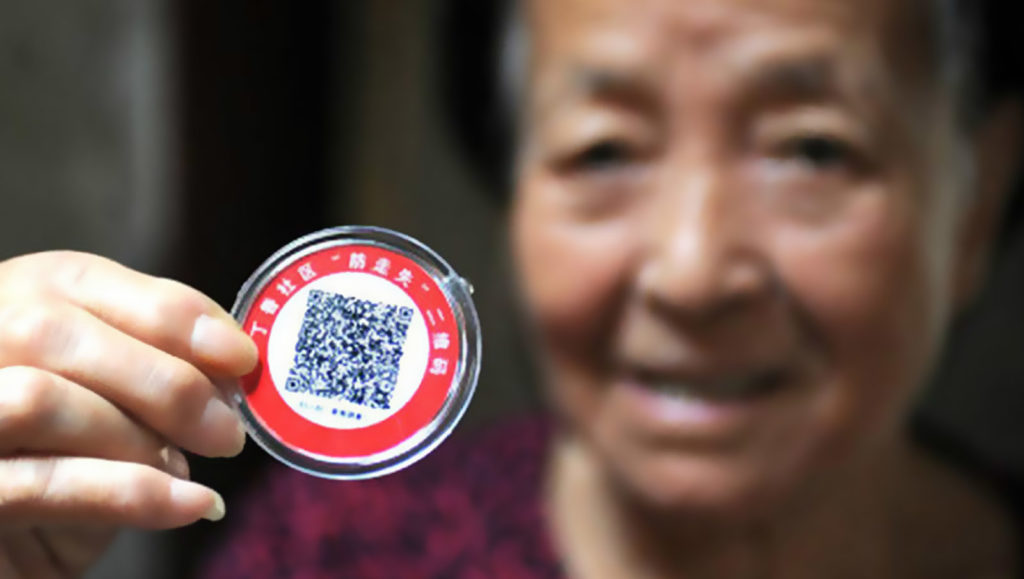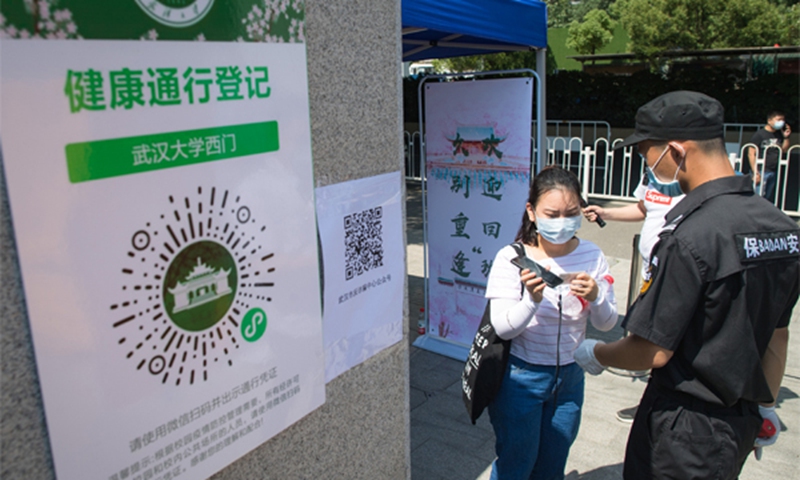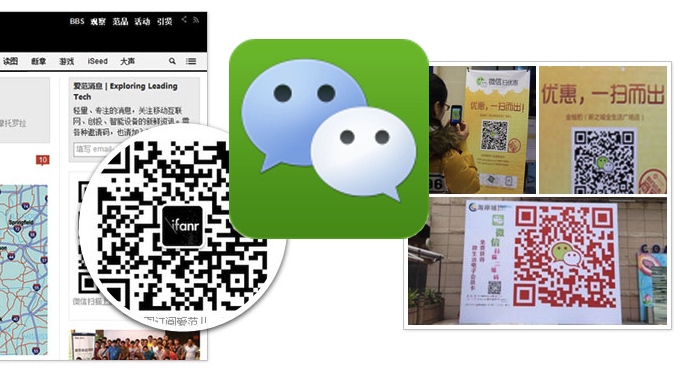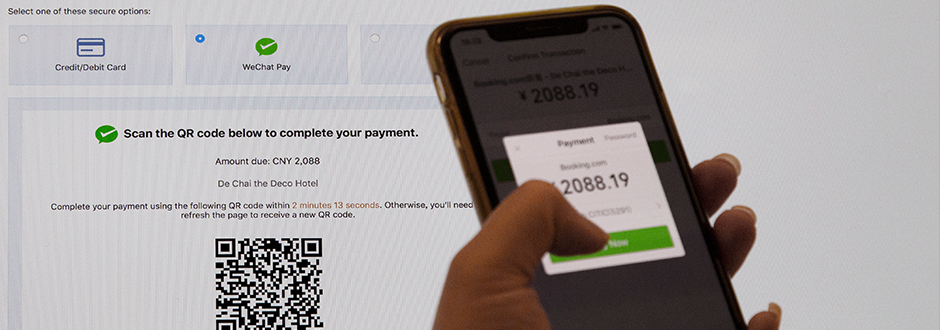With the deeper penetration of smartphones and the integration of native camera apps, QR codes in China have become commonplace. It has helped develop a consumer habit of paying for everything by QR Code. If you want to run a business in China, QR code payment is almost indispensable, otherwise, the business will awkwardly find itself unable to collect payments from its Chinese customers. Today, the possibilities are only increasing.
"Stop selling. Start helping." – A popular Zig Ziglar quote was never so relevant as it is in today's digitally connected world. Every transaction your customer makes today must be a great experience. A QR Code is a front runner when it comes to a seamless purchasing or scanning experience your customers can have.
In China, food, clothing, housing, transportation (bicycle sharing system, taxi, public transport), education, and entertainment, all can be paid for by QR code. Therefore, from a consumer perspective, holding a mobile phone in hand, you can basically live a life in China without any problem, which is more useful than having cash on hand.
QR codes accounted for over 90 percent of China's mobile payments, primarily because of popular social media platforms in China. The relatively lower cost of implementation for merchants is one reason that has led to people adopting QR codes for payments. A digitally advanced China was already ahead in online payments, and the people in China found it more convenient to point their phones at some black and white squares to access a website than to type in a lengthy URL. The use of the QR code has become widespread among small and large industries and individuals in China.
Related reading: A quick guide to starting an online business in China
Owing to QR codes, China ranks as the fastest growing country for mobile payments. However, payment is not the only benefit of using QR codes.

10 current use cases of QR codes in China
The QR code is everywhere, from web pages to applications, advertisements, products, packaging, and more. There are varied uses of the QR code in China due to its convenience. Listed below is just a small sample of the popular applications of QR codes in China.
- Payment. All payment processors in China accept QR code payments for any small or large transaction. Besides making payments through major local payment processors or social media platforms such as Alipay and WeChat (and many other social media platforms), the user can even use it to add friends without using his/her phone number, unlike WhatsApp. One can even invite friends to join social media groups and platforms by sharing the QR code.
- ID verification. QR code played a key role during the pandemic and is a popular identity verification mechanism in China. The Chinese government has recently vouched for a global mechanism that can use QR codes to open up international travel and ensure the traveler's health status.
- Marketing a product has become convenient using QR codes. In WeChat, it is used to promote an organization's official WeChat account by adding them to advertise products. It can significantly help create brand awareness in China to boost business.
- Gifting money through QR codes instead of physical gifts has made it practical and convenient for guests and the bride and groom at weddings.
- Pet safety. Having a QR code with a person's contact details attached to their pet's collar can be a saving grace in case the dog or cat loses its way.
- Searching for jobs by scanning QR codes posted at events helps applicants apply for vacancies.
- Health status.QR code applications have been developed to indicate the health risk factors of individuals. A risk analysis conducted with Big Data, mobile communication technology, and the internet can generate and assign QR codes to individuals based on their health status. Following the principle of traffic lights, the green code indicates safety, and the yellow and red codes indicate different health statuses.
- Quality control is an important part of manufacturing and it's important to be able to trace the production process. QR codes have been standardized and implemented in Chinese factories for quality assurance and process control.
- Food safety has been a big concern in China, so consumers are happy to scan QR codes on food packages to learn about safety information and track the full life cycle from the farm throughout the supply chain.
- Health care has been an area where patients lodge lots of complaints. With the advent of QR codes, wait lines have been dramatically reduced and overall efficiency has been increased.
Apart from the above-listed applications, there are endless possibilities for using QR codes. Hiring, sharing, tipping, ticketing, checking in/out, registering complaints, and providing feedback are among other ways QR codes are being used in China.

Using QR codes effectively to boost business in China
Doing business in China without using QR codes will make it more challenging and sometimes almost impossible. Its convenience has made it so popular in China that organizations use it for multiple purposes. Estimates show that users interact with QR codes in China about 10-15 times daily. It is advisable for any Western business operating in China to capitalize on this established infrastructure to reach its vast potential client and consumer base. Western organizations can do the following to become successful with QR codes in China.
- Bridge digital/ actual gaps: A brick-and-mortar store in a country like China may not succeed well. It is vital to clear the gap between the digital and the physical worlds for a business to grow. That is where QR codes on advertisements and billboards can help drive traffic online where most consumers finalize their transactions. Engaging with potential customers online creates an endless market. It saves the consumer time and effort spent visiting stores for items such as groceries.
- Showcase products: In China, showcasing the product information using QR codes that lead to its business website can be extremely helpful. There were almost one billion smartphone users in China by the end of 2020 (source: China Internet Network Information Center), and those numbers are only rising. Tapping into that crowd can profit an organization's business worth millions. QR codes can also lead clients to the resume of an individual or company profile on LinkedIn.
- Offer promo codes: Whether an organization is a service provider or an e-commerce platform, it's crucial to direct people to its business site. The more people are exposed to its online presence, the greater the chances of monetary gain. Offering promo codes with discounts can result in good sales.
- Use dynamic QR codes: Another great way to present business offerings is through dynamic QR codes. It is handy if it's in the food and beverages industry with ever-changing menus offering special deals of the day and discounts or showcasing cuisines of particular tourist destinations. Similar establishments like local entertainment centers for children or spas can make use of dynamic QR codes effectively.
- Conduct surveys: Conducting a survey can be made easy and effective using QR codes. For example, if one is at a conference showcasing a product and witnessing exciting reactions from the audience, one might switch instantly to the QR code slide for a quick survey. That way, a business can capture the audience's thoughts and opinions while the experience is still fresh. Sending out email links to surveys later may not be as effective.
Related reading: 7 mobile app trends to watch out for in 2022

Analyzing the security aspect: Pitfalls attached to QR codes
With QR codes making so many aspects of daily life convenient, it is no surprise that people with malicious intent will attempt to gain unauthorized access to personal and sensitive information. There are several methods attackers use to target people. The two most common are:
- Phishing: According to a report, 71% of people could not distinguish between a legitimate and malicious QR code. Because these codes are not humanly readable, criminals can replace a legitimate QR code with a malicious one. Since most people will not notice it, they scan it, which leads them to a malicious site similar to the legitimate one and prompts the user to fill in personal details.
- Social Engineering Attacks: Social engineering is the method of manipulating people into divulging sensitive information. Malicious actors use QR codes to deceive people and access their banking information, passwords and smartphones.
Security Tips
As malicious forces are lurking everywhere, it is always prudent to take necessary precautions and safeguards as mentioned below to stay at a safe distance from threats.
- Because QR codes are not human-readable, determining whether the code is legitimate or malicious can be difficult. Advising customers not to scan from unverified sources can save them from being victims of malicious content getting downloaded onto their devices.
- While using a QR code that directs a user to a particular website, they must always check the website URL in detail before entering any other information.
- One must avoid using QR codes to log into social media accounts, internet banking, or other apps unless they are absolutely sure.
- It is critical to have a mobile security solution installed on the smartphone. A capable threat defense system installed can determine malicious QR codes before scanning and protect personal and corporate information that the smartphone may later access.
- It is advisable to use a QR Reader with built-in security. Nowadays, a user can scan QR codes directly from the camera app. However, there are dedicated QR code reader apps with security features such as displaying the URL of the QR code before visiting the link.

Final thoughts
China is undoubtedly the world leader in the use of QR codes, but it gained momentum in other countries as well with the advent of Covid-19. Organizations across the world have implemented the QR code as it enables social distancing and contactless payments. Some countries like Netherlands, Nigeria, Russia, and Ghana have even incorporated the QR code into their currencies. Businesses worldwide need to take notice and take advantage of this well-established technology to advance their business.
To learn more about succeeding in China, check out our other articles.
If you want to learn more about testing in China, check out our solutions.



